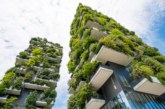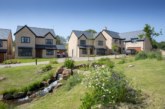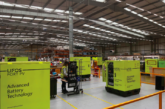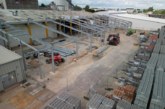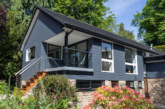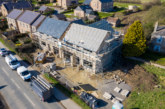New research by Roofing Megastore reveals Brits are increasingly interested in more sustainable forms of construction. The study analysed Google search data over the past two years for different construction methods and building materials to uncover which have seen the biggest increases in interest over time.
Regenerative building design and architecture were the clear winners among styles of construction, increasing 600% and 212% respectively. Amongst the building materials, most of the top spots went to sustainable alternatives to traditional concrete, such as rammed earth. Despite its many strengths, concrete’s harmful effects on the environment cannot be denied. In fact, if global concrete production were considered a country, it would count for 8% of the world’s CO2 emissions, coming third to the US and China.
This eco-friendly shift comes alongside the government’s £134m pledge to build back better, as well as moves by some of the industry’s biggest names. Sustainability-focused not-for-profit Changing Streams has recently partnered with Arup, aiming to work alongside their experts and identify where plastic waste can be reduced in construction. Global construction and consultancy firm Mace has also pledged to reduce single-use plastics in its “Time to Act” campaign.
Top 10 Eco Friendly Construction Styles Increasing Most in Popularity in 2020
- Regenerative Building Design 600.00%
- Regenerative Architecture 212.24%
- Eco Friendly Architecture 158.72%
- Eco Friendly Construction 154.29%
- Zero Carbon Building 142.29%
- Eco Friendly House Construction 141.67%
- Sustainable Property Development 134.48%
- Eco Houses 133.68%
- Passive Housing 112.94%
- Sustainable Construction 112.57%
Gian-Carlo Grossi, Managing Director at Roofing Megastore commented: “As COVID-19 brought our physical health to the forefront, we also had a chance to consider the health of the world around us. Last year showed Brits turning clearly towards green alternatives to traditional construction methods and materials, as we all seek to create a healthier, more sustainable built environment moving into 2021 and beyond.”
The full research, including broader trends in the construction industry can be found here.


